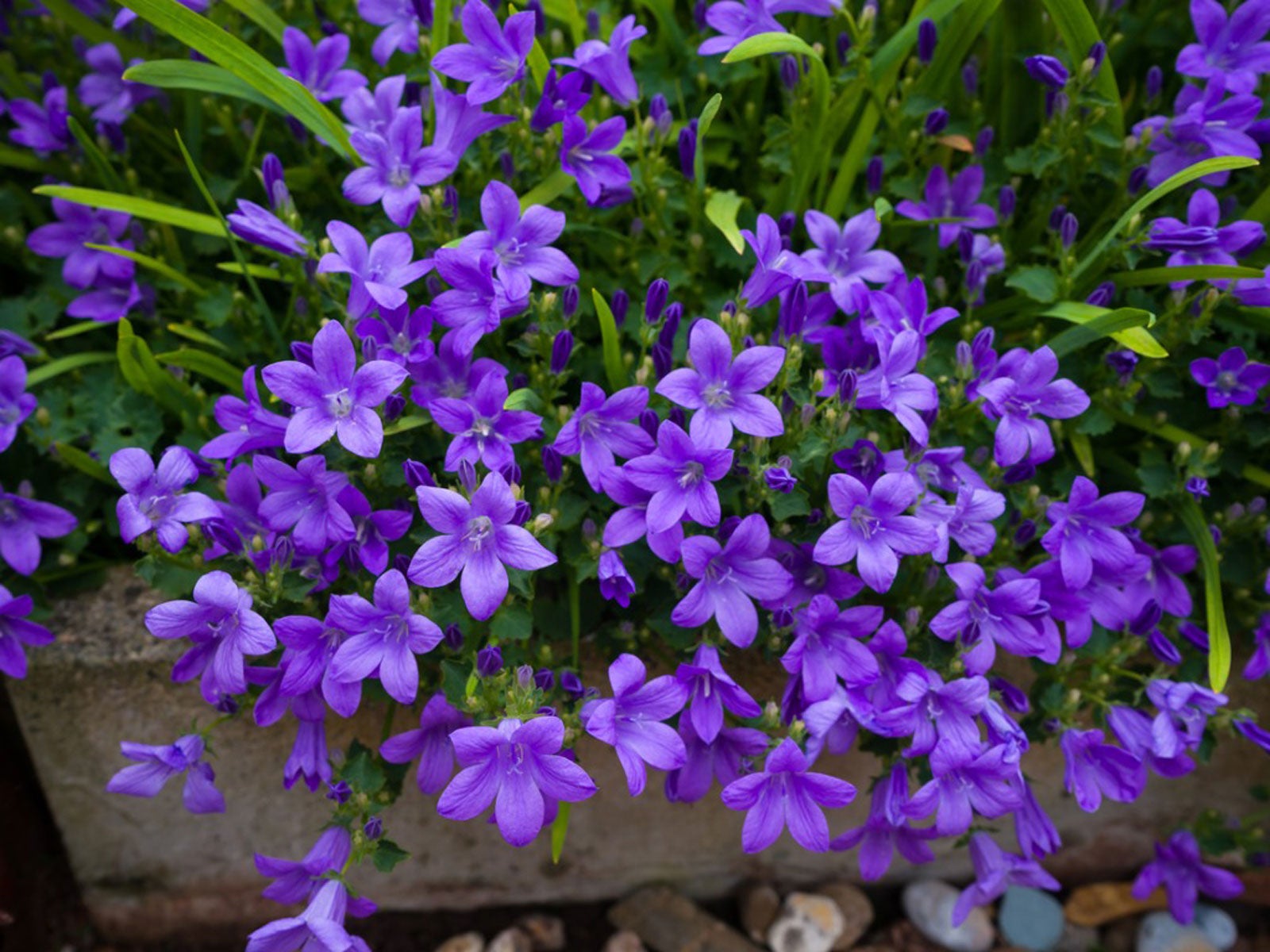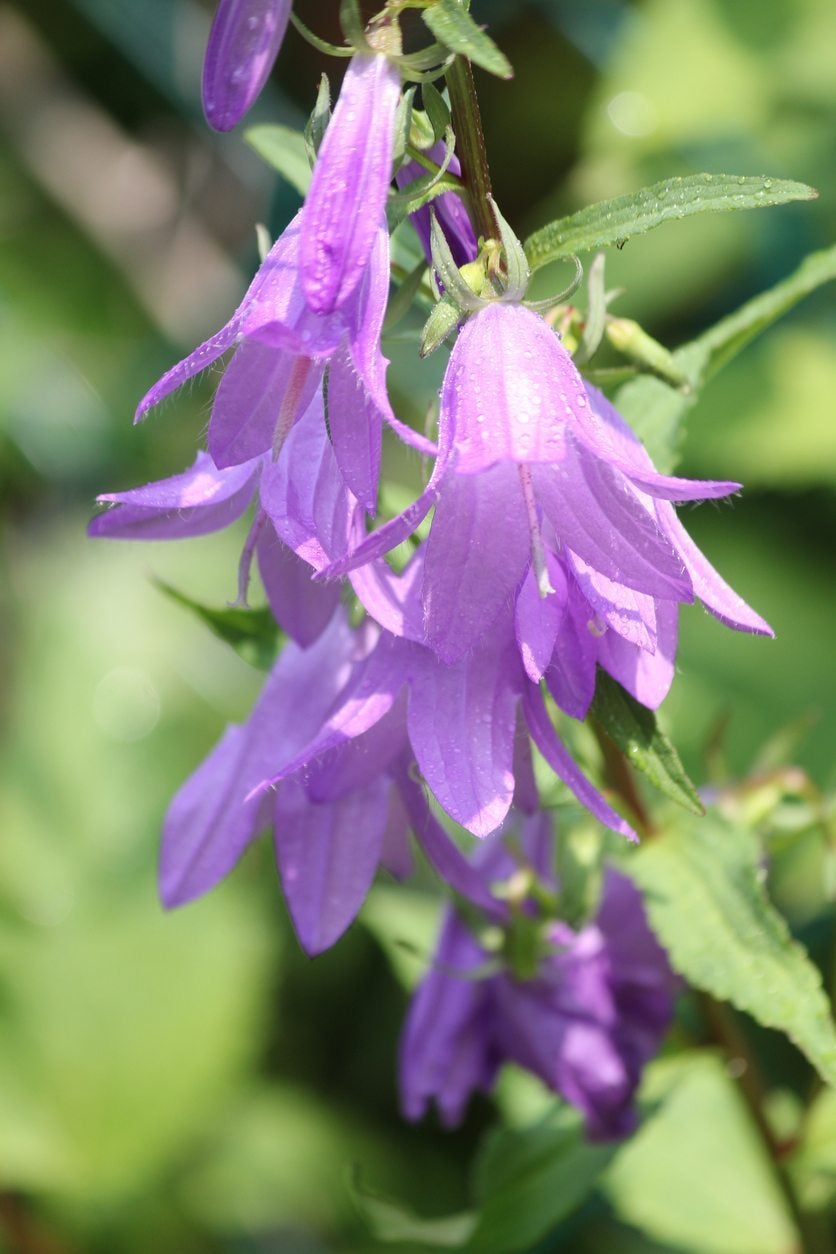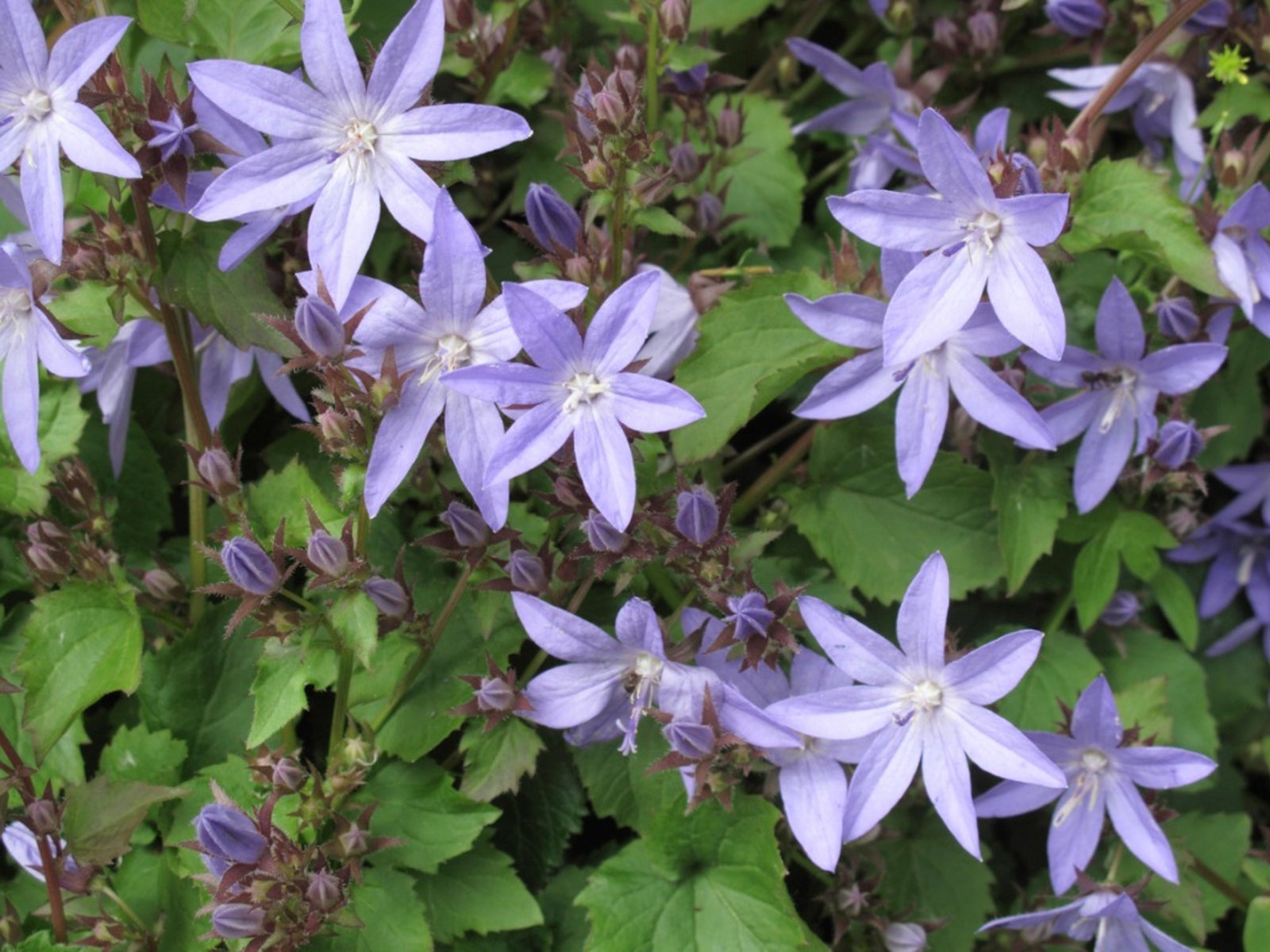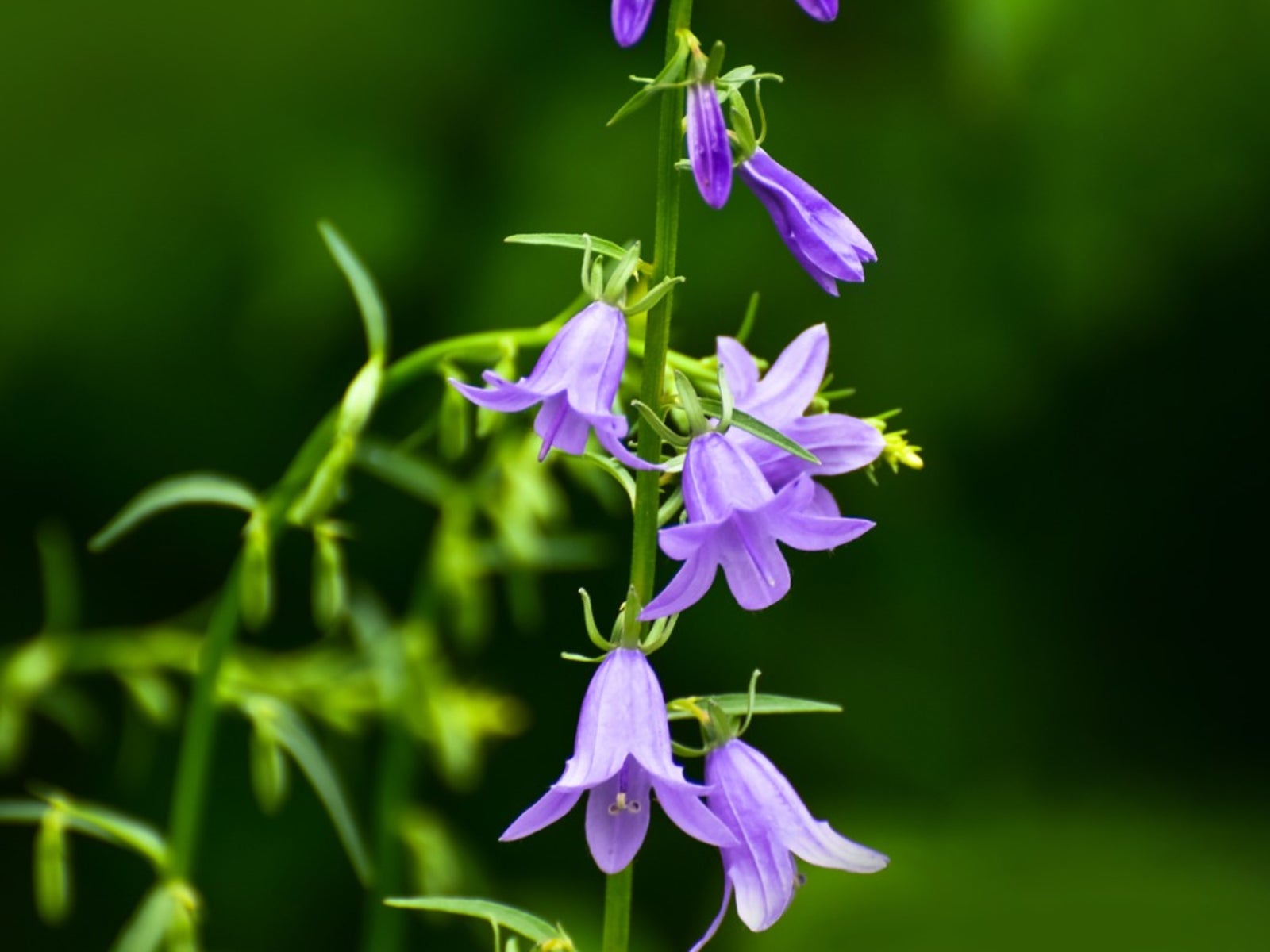Campanula Care: How To Grow A Bellflower Plant
The lovely campanula flower, or bellflower, comes in different colors, shapes and sizes, and adds a bright, delicate element to a yard, garden or planter.


Campanula Care Guide – How To Grow Bellflowers
Quick Facts:
Botanical name: Campanula
Height: 3inches, up to 6 feet (8 cm-1.8 m)
Spread: 6-36 inches (15-91 cm)
Sun exposure: Full sun to light shade
Soil requirements: Average, well-draining
Hardiness zones: USDA 3-9
Gardening tips, videos, info and more delivered right to your inbox!
Sign up for the Gardening Know How newsletter today and receive a free copy of our e-book "How to Grow Delicious Tomatoes".
When to plant: Spring
Bellflower campanula is a large family of primarily perennial bloomers. Campanula flowers come in a variety of sizes, and colors with most blooms the shape of its common name, the bellflower plant. With over 300 species of campanula plants ranging across subtropical to temperate climes, there’s certain to be a bellflower or two suited for your garden. Read on to learn how to care for campanula.
About Campanula
The Campanula Bellflower comes in a large variety sizes and habits from dwarf perennials to soaring herbaceous species that bloom in the spring. Many are blue or violet, although some are white or in the pink spectrum. The blooms are usually bell-shaped but may be star or cup-shaped.
Campanula plants can be as diminutive as 3 inches (8cm), perfect for groundcover, or as gargantuan as 6 feet (1.8 m). The bellflower can be propagated from seed, and some can be grown by division, cuttings or even self-sowing. Plant campanula in the spring after all chance of frost has passed for your area.
Bellflower may also be found under the names Canterbury Bells, Harenbells, Cups and Saucers, Clustered Bellflower, Carpathian Bellflower and Serbian Bellflower.
Campanula Care
Campanula care varies depending upon species and region but, for the most part, it is a low-maintenance plant that’s tolerant of a variety of soils provided they are well-draining.
Water
Most bellflowers need only be watered once a week, depending upon weather conditions. Those that are native to alpine regions, however, prefer to be kept consistently moist.
Light
Bellflower does well in full sun to partial shade, depending upon the species.
Temperature and Humidity
Most Campanula varieties prefer cooler temps and are cold-hardy. Their ideal temp is around 65 F (18 C).
Soil
Campanula thrives in moist soil that is well-draining. It isn’t particular about the soil content and can adapt to acidic soils.
Fertilizer
Either side dress the soil with a fertilizer that’s high in potassium which will encourage blooming, or fertilize with a diluted (half-strength) liquid general plant fertilizer.
Problems, Pests & Diseases
Some bellflower varieties are deer and rabbit-resistant as well as resistant to many pests and diseases.
Other more sensitive species may be afflicted by aphids, Botrytis, leaf spot disease, powdery mildew, or root rot. Slugs and snails are also known to dine on this pretty perennial.
Pruning
Deadheading, or removing any yellow, dying or diseased leaves is recommended. Use clean, sterile pruning shears and remove any other parts of the plant that look diseased or dying.
Propagation
Bellflower can be propagated via cuttings, division or seeds. To take a basal cutting, cut about 4 inches (10 cm) of softwood stem that has not bloomed. Dip the cutting in a root hormone and then plant it in well-draining soil.
To divide bellflower, split the root ball into sections that are at least 2 inches (5 cm) across in the early spring. Place these sections in the soil and keep them watered consistently. Keep the growing divisions in partial sun.
Common Campanula Varieties
There are so many bellflower varieties that are likely perfect for your landscape. Some of the more common include Adriatic, American, Bearded, c. alliariifolia, C. betulifolia, C. primulifolia, C. isophylla, C. rapunclulus, C. rapunculoides, C. takesimana, Chimney, Dalmatian, Harebell, Milky, Nettle-leaved, Peach-leaved, Serbian, Spotted, and Spreading bellflower. Following is a short list of some of our favorites.
Bluebells - Bluebells are one of the most common Campanulas. These little woodland flowers are common across North America in highland fields.
Scotch bluebell is native to the British Isles and may get 10 inches (25.5 cm) tall.
Dwarf bellflowers - Dwarf bellflower is useful in container gardens and tucked into rockery crevasses. It gets only 3 inches (7.5 cm) tall but may spread 15 inches (38 cm) wide.
Carpathian harebell - Carpathian harebells may achieve 12 inches (30.5 cm) and are one of the most cold-hardy specimens.
Note: The American bellflower is a vigorous seeder and may become a nuisance plant, but the 1-inch (2.5 cm) wide, true-blue flowers are worth the extra effort to keep it in control.

Bonnie Grant is a professional landscaper with a Certification in Urban Gardening. She has been gardening and writing for 15 years. A former professional chef, she has a passion for edible landscaping.
-
 Looking For Plants To Give You The Soft And Fuzzies? Try These 5 Fuzzy Leaf Plant Options
Looking For Plants To Give You The Soft And Fuzzies? Try These 5 Fuzzy Leaf Plant OptionsLovers of texture, drama, silver foliage and tactile plants will adore these special sensory garden additions. These fuzzy leaf plant options will leave you all aglow
By Susan Albert
-
 Get Ready For A Summer Of Hummers! Grow These Full Sun Hummingbird Plants and Flowers
Get Ready For A Summer Of Hummers! Grow These Full Sun Hummingbird Plants and FlowersIf you’re lucky enough to enjoy a sunny backyard, make sure you are maxing out on your pollinator opportunities and grow these full sun hummingbird plants and flowers
By Tonya Barnett
-
 What Is Creeping Bellflower & Tips On Removing Creeping Bellflower In Gardens
What Is Creeping Bellflower & Tips On Removing Creeping Bellflower In GardensExactly what is the problem with creeping bellflower in gardens? This lovely little plant with the pretty purple blooms is actually a burly thug that can create absolute havoc for unsuspecting gardeners. Learn about removing creeping bellflowers here.
By Mary H. Dyer
-
 Serbian Bellflower Care: Tips On Growing Serbian Bellflowers
Serbian Bellflower Care: Tips On Growing Serbian BellflowersSerbian bellflower plants are a great way to add long-lasting color to the home landscape. Serbian bellflower care is minimal and you'll find it is one of the easiest plants to grow. Read this article for more info.
By Becca Badgett
-
 Campanula Propagation - How To Plant Campanula Seed
Campanula Propagation - How To Plant Campanula SeedSince most are biennial, propagating campanula plants is often required in order to enjoy their blooms each year. Although they self-seed in some areas, this article will explain other methods of campanula propagation.
By Nikki Tilley